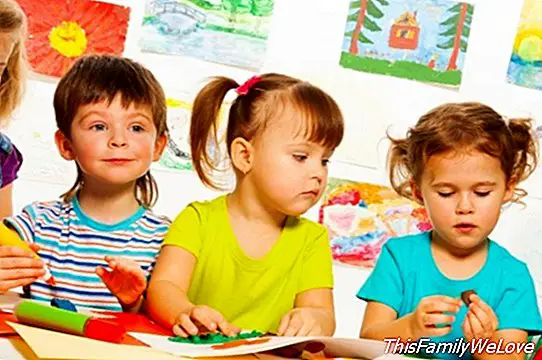10 games for children with dyslexia

The children with dyslexia they face many difficulties every day. Their way of perceiving the letters and processing the information they transmit is different. Children with dyslexia have a different way of understanding written information, which is why they need specialized attention in this regard. A teaching adapted to their characteristics and their needs that allows them to develop their abilities.
Dyslexia is a specific learning difficulty of neurobiological origin. Dyslexia manifests itself in difficulties related to written language. Reading, writing, and any activity that involves the decoding, interpretation and understanding of symbols arbitrarily created to communicate.
Children with dyslexia encounter significant difficulties in reading and writing processes. Beyond the comprehension of the letters, they find it difficult to understand the arbitrary rules that associate each letter with a certain sound. In his mind the letters seem to crowd, following incomprehensible movements. They need to order these letters and make sense of them.
How is the child with dyslexia?
Children with dyslexia have a normal intelligence, they are not less intelligent, they can even become brilliant when they are provided with adequate stimulation. Dyslexia usually creates many difficulties: they spend a lot of time on school tasks without reflecting the desired success, they do not understand what happens to them, they are sometimes labeled as lazy and clumsy, which affects their self-esteem.
Stimulation of children with dyslexia
Children with dyslexia need a special stimulation focused on the phonological and graphic discrimination of the letters. That is, it is about training your phonological and graphic awareness. In other words, the activities must ensure that the child practices the letters in a way that associates the written symbol with its sound.
It is important that they are entertaining and varied activities, since the playful character favors the interest and motivation for the task. As well as varying activity will allow them not to be discouraged, that is not tedious and that they maintain attention.
Children with dyslexia can learn just like other children just need the right stimulation.
The best activities for children with dyslexia
1. Play with a written text from a story, magazine, newspaper, etc ... and ask him to look for a letter. For example, let's find all the letters "D" in the text. In this way the child trains and stimulates visual discrimination between the chosen letter and the other letters.
2. Ask him to count the syllables and letters of the words. In this way we focus on the letters and their sounds. By counting the syllables we encourage you to focus on the sounds.
3. Put similar words that only differ in one letter. Ask him to point to the letter in which they differ. (Example: duck-stick, suitcase-pot, horse-hair, etc.)
4. Play to replace some syllable of the word with another similar one, so you can check the difference between the sounds. In this way we stimulate phonetic discrimination. (For example the word ball, we ask you to substitute the syllable ta for pa and pronounce pelopa).
5. Show him separate syllables and ask him to join the syllables by forming words. In this way we stimulate auditory and visual discrimination and its ability to create with letters.
6. Remove a syllable from the word and ask it to find the missing syllable.
7. Teach him a syllable and ask him to indicate words that contain that syllable. For example the syllable -bra, can form words like arm, snake, hug, etc. In this way he stimulates his ability to identify syllables and form words with them.
8. Play the word chains. It is about saying a word and the other person has to say a new word that begins with the last syllable of that word. (for example: suitcase-cup-shoe-mole-little-food-given- * ..). Through a game we stimulate your discrimination in an entertaining way.
9. Use classic hobbies, like word searches or crossword puzzles. They are an entertaining way to train visual discrimination of letters.
10. Ask him to read and write frequently. Practicing reading and writing will be very helpful. You can use any reading, rhymes and tongue twisters can be a good option.
Celia Rodríguez Ruiz. Clinical health psychologist. Specialist in pedagogy and child and youth psychology. Director of Educa and Learn.
Author of the collection Stimulate the reading and writing processes
You may also like:
- What is dyslexia and how to help our children
- 'Letters and I', a story about dyslexia




